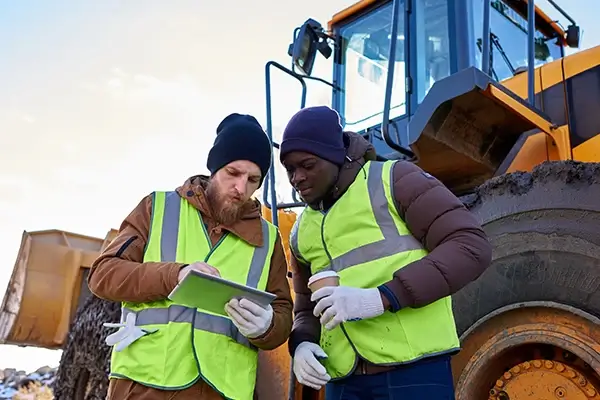A safe and optimized mining operation must balance administrative and engineering controls to ensure all bases are covered, and employees are safe. While it is important to take extensive preventative measures, it is also important to be ready if disaster strikes. Inspecting mining equipment is a critical step in ensuring the safety and efficiency of mining operations.
Why Inspect Mining Equipment?
The principal purpose of a mine inspection is to verify compliance with Regulatory Requirements and, where necessary, take the appropriate compliance action. Mines have very high compliance requirements and need quality, accurate reporting, and quick turnaround. Therefore, regularly and proactively scheduled inspections are critical for ensuring the longevity and peak performance of equipment and processes at sites.
As we all know, unplanned equipment downtime can cause severe financial losses. Equipment failures, multiple calls to a service centre, degrading process efficiency – these are all potential outcomes from equipment that has not been regularly inspected (and, as a result, maintained).

What is the Inspecting Mining Equipment Process?
Effective management of mining assets is critical for long-term success. Today’s mining industry demands strategies and tools to overcome maintenance challenges. This will be achievable by the mutual work between operations and maintenance staff to ensure that assets maintain their expected level of quality and volume for output while reaching their expected lifespan.
This approach dramatically reduces and eliminates reactive maintenance by implementing procedures to ensure that assets are:
- Adequately configured with all specified guards, safety devices and environmental protection.
- Operating within proper parameters (i.e. acceptable temperature/pressure/flow rate etc.)
- Protected from dirt, water and other sources of contamination.
- Checked for seals operating properly (no leaks of lubricant or process fluids).
- Receiving the correct type and amount of lubricant as per the lubrication schedule.
These inspections are all carried out with a thorough considering the following parameters:
- Setting up the inspection routes,
- Creating the inspection specifications in the database,
- Training operators & supervisors in the use of the system,
- Ongoing management and support of the inspection database.
- Schedule the inspections for a time period.
- Carry out the inspections on time.
- Generate and deliver a list of noted exceptions.
- Notify all participants about any exceptions found during the inspections.
- Schedule and conduct any remedial action needed to eliminate the exceptions.
Checklists and Guidelines
To create a practical mining equipment inspection, the following industry best practices recommended to be followed:
- Use Checklists: Checklists are a great way to ensure that all necessary inspections are completed. Checklists should include all of the components of the mining equipment that need to be inspected, such as Mine Shaft, Shaft Liner, Head Frame Hoists, Tunnel Piping, Oversize Brake Systems, Conveyor Systems, Pressure Equipment, Chains and Lifting Equipment, Storage Tanks, etc. . This will help to ensure that nothing is missed during the inspections.
- Document Findings: It’s essential to document the findings of the inspections. This will help to establish a trend of the inspection findings of the equipment, which can be used for future references, like equipment breakdown pattern (unscheduled), Preventive Maintenance efficiency (time based /scheduled).
- Follow applicable regulations, standards, and manufacturer Guidelines: Different types of mining equipment may have different inspection requirements. It’s important to follow the manufacturer’s guidelines for each piece of equipment to ensure that the inspections are thorough and effective. Also, compliance with the applicable regulations and codes needs to be considered in the inspection checklist. For example, only pressure vessel and pressurized system inspection, recertification, and design reviews must comply with ASME Section VIII, Division 1 and 2; BS 5500; ANSI B31.1; ANSI B31.3; AD-Merkblatt; Technical Rules Dampfkessel (TRD).
- Be Vigilant: mining equipment inspections should be conducted regulrly. It’s important to be vigilant and look for any signs of wear or damage that could potentially lead to an accident. It’s also important to take note of any changes in the equipment’s performance, as this could indicate a potential issue.
- Report Issues: If any issues are found during the inspections, they should be reported immediately. This will ensure that the issue is addressed promptly and can prevent any potential accidents or further damage.

How Field Eagle can Help
Mining operations and manufacturing facilities rely on the continued safe operation of vehicles and machinery to maintain safety and profitability. Maintaining up-to-date mining equipment is critical for your employees’ safety and keeping project costs low. Any equipment failure can be expensive in terms of lost production and repairs.
If you’re ready to see how Field Eagle can make inspecting your mining operations faster and easier than ever, request a demo, and let us show you how.





